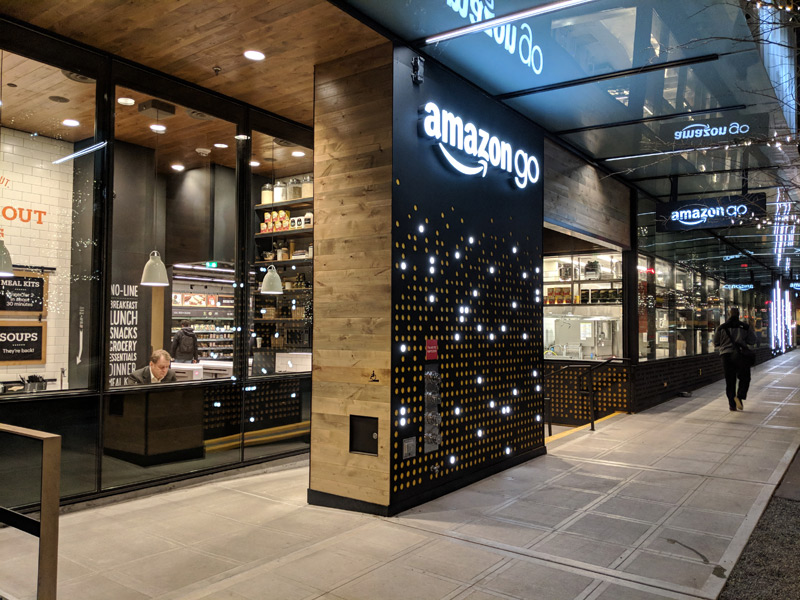
23rd January 2018 Amazon opens hi-tech automated store Amazon has opened its "Amazon Go" store to the public, the first completely cashier-less convenience store.
"Amazon Go" is a new prototype automated convenience store, operated by online retailer Amazon in Seattle, Washington. The first (and so far, only) store is located on the ground floor of the company's headquarters and was opened to employees in December 2016. Yesterday, it was opened to the public, following a series of further trials and technology tests. The store has prepared foods, meal kits, groceries and liquor available. Amazon Go features the world's most advanced shopping technology. It allows customers to purchase products without the need for queuing, or cashiers or even using a checkout station. They simply take whatever they want from the shelves and then leave. Hundreds of cameras in the store are combined with tiny sensors including weight sensors on shelves, to identify people and determine the precise items they are carrying. However, customers must download the Amazon Go app for iOS and Android, which is linked to their Amazon account, before entering the store. The app allows users to add others to their Amazon account, so kids and a spouse's purchases can be charged to the same bill. In addition to stocking name brands and local brands, the store sells many of Amazon's house brands. Food stamps are not accepted, nor are customers without later model smartphones or devices that do not have the Amazon Go app installed. According to a promotional video released by Amazon, the store concept uses deep learning algorithms, alongside the cameras and sensors to automate the purchase, checkout and payment steps for a retail transaction. With Amazon planning to open many more of these stores – and other companies likely to follow – this technology could revolutionise our shopping experiences in the not-too-distant future, as well as supply chain and inventory management.
Comments »
If you enjoyed this article, please consider sharing it:
|







